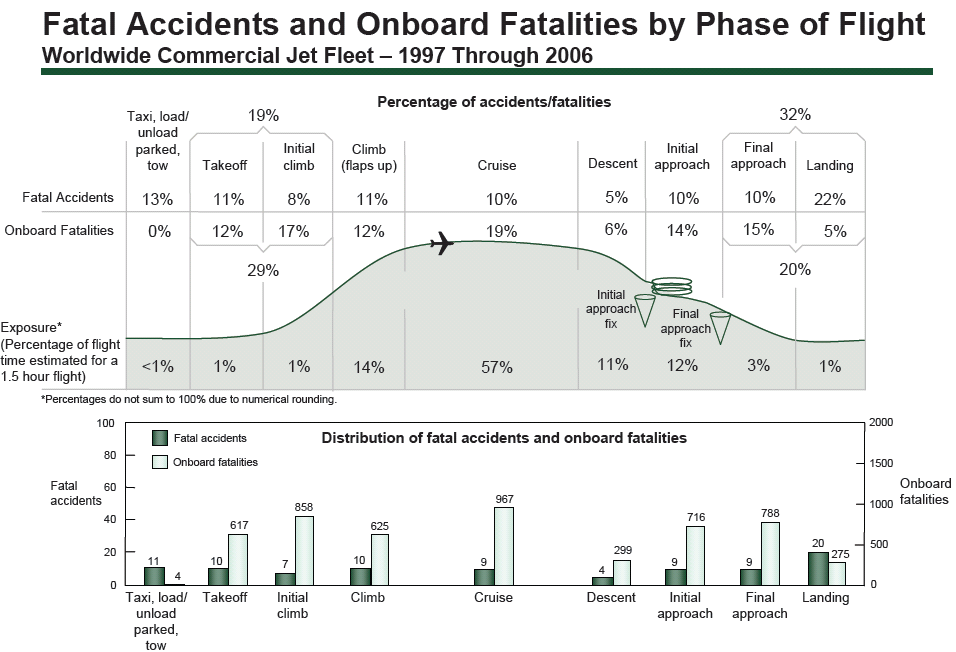News

Cabin Safety and Aircraft Emergency Evacuation
"Take a short break with ENAC Alumni summer issue and discover articles from our previous mag"
Public demand for air travel has increased steadily over the last decades and, all the major aviation actors forecast that - further substantial growth, nearly doubling of the air traffic, into the next coming decades. From the very beginning of Aircraft operations, Safety has been the major driving force in commercial aviation sector, closely followed by performance, economics and, very recently, environmental issues. The awareness on all aspects of aviation safety, apart from general public which intermittently awake worried and grieved after every accident, is permanent in Aircraft designers, Aircraft Operators, and is particularly active in airworthiness authorities since they have all responsibilities and objective of improving safety levels and establishing appropriate regulations.
In the past decades, significant safety standard has been introduced on all aspects of aviation: design, flight operations, maintenance procedures, training. The rate of accident has decreased drastically in the last three decades, thanks to efforts by all aviation actors but the percentage of passengers surviving after the accident/incident has not decreased in comparison to the improvements achieved in other areas. A survey by the European Transport Safety Council assesses that 40 percent out of the 1500 persons who die every year in aircraft accidents, around 600 passengers die in technically “survivable” accidents. This study shows that a little more than half of them die from the direct result of the impact, and the others die because of fire, smoke, or problems that arise during the emergency evacuation process. Due to these reasons, not only the issues concerned with the prevention of the occurrence of accidents needs to be tackled but also issues contributing to improving the survival rate in the event of an accident/incident.
In order to increase the survivability of passengers in case of accident/incident, one of the major area that needs immediate attention as recognized by major stakeholder is cabin safety including successful emergency evacuation following the impact- survivable crash.
Fatal Accidents and Onboard Fatalities by Phase of Flight

Cabin Safety
Cabin Safety focuses on aircraft occupant safety including safety responsibilities and roles of aircraft cabin crewmembers. These safety interests overlap into many areas of the aviation industry, including aircraft design, configuration, operations, in-flight service, maintenance, and flight crew training, to name few areas. It covers a wide range of areas; examples include crashworthiness, operations, human factors, psychology, bio-dynamics, physiology, ergonomics, pedagogy, etc. Mainly the authority uses (Cabin Safety Standards Division at Transport Canada) the following definition to best describes the cabin safety field “Cabin Safety is a field that reduces fatalities and injuries resulting from an accident and provides for a safe environment for passengers and crew members in and around the aircraft, prior to and during boarding and deplaning phases, while the aircraft is on the airport apron with people on board, and during the operation of the aircraft. It includes the aircraft cabin, its exits, its configuration, its furnishings, its equipment and its people."

Even though the ultimate goal of aviation actors is to have no accident, a Controlled crashed followed by Emergency Evacuation is the reality. Cabin Safety globally could be defined as a field that reduces fatalities and injuries resulting from an accident and provides for a safe environment for passengers and crew members in and around the aircraft, during boarding and deplaning phases, at the gate with people on board, and during the operation of the aircraft. And, the goals of the Cabin Safety are: IN FLIGHT : to make sure that minor events in the cabin will not end up to a catastrophic situation (For example: smoking, tentative to open a door…) and IN A CRASH LANDING : to ensure that the design of the A/C will allow the highest number of occupants to survive.
Aircraft Emergency Evacuation
Survivability of passengers and crew in aircraft accident depends largely on following three major aspects related with cabin safety: impact protection, fire survivability, and aircraft evacuation.
Most important aspects related to the survivability of the passengers in case of survivable accident are “how fast, quick, efficient and effective evacuation can be carried out”, which plays a vital role for those who survive the initial crash.
Current international regulations require that an aircraft must be evacuated within 90 seconds with half of the exits operational and this is tested during aircraft certification. However, in real life crashes evacuations often do not run as smoothly as necessary and require more time. There are many factors, which influence evacuation time and survivability in aircraft accidents. These factors can be broadly classified into four groups:
- Configuration of the aircraft,
- Environment factors (how fast fire is propagating, toxic substances…),
- Aircraft Emergency procedures (Knowledge and training of the cabin crew, dual responsibility of Cabin crew..).
- Behaviours aspects (How passenger behave in real accident scenario, stress factors, competitive behaviours..)

FIGURE 2
Boeing 737–236 accident during take-off from Manchester Airport due to engine failure. 78 Passengers out of 131 passengers including 2 cabin member lost the life. Most of the deaths were due to smoke inhalation. The accident was instrumental in bringing about changes to make aircraft evacuation more effective and has been described as "a defining moment in the history of civil aviation". Upon recommendations of the UK's Air Accidents Investigation Branch, the aviation industry introduced changes to the seating layout near emergency exits, fire-resistant seat covers, floor lighting, fire-resistant wall and ceiling panels, more fire extinguishers and clearer evacuation rules.
Of the numerous elements of an aircraft’s emergency evacuation system, exit and slide design, flight attendant training, and full-scale evacuation demonstrations required for type certification have engendered the most attention and public debate. And the major difficulties with conducting research into the survival of aircraft accidents is the introduction of sufficient realism in the process, without putting participants at serious risk of physical or psychological plus harm. Understanding behaviour of the passenger in highly stressful and disorienting conditions (Actual accident) is one of the important factors to improve the probability of a successful evacuation from an aircraft.
Unfortunately, as yet, very limited research effort has been performed on the impact of passenger behaviour on aircraft emergencies and evacuation. However, the information from other disaster situations like building or ship evacuations and along with report from survivor from the aircraft accidents has been developed to build up representation of the behaviours within cabin during the emergency situations. Significant differences are found on the behaviour of the passenger during different emergency situations, sometimes they tries to flee out of the plane in an orderly manner whereas in other cases the orderly manner breaks down and confusion in the cabin leads to blockages in the aisles and at exits. The primary reasons for the differences in behaviour between the orderly and disorderly situations must rest with the individual motivation of the passengers. In some accidents, all of the passengers assume that the objective is to get everyone out of the aircraft as quickly as possible, and they therefore all work collaboratively. In other emergencies, however, where an immediate threat to life is perceived, the main objective will be survival for themselves, and in some instances, members of their family instead of all passengers being motivated to help each other, In this situation when the primary survival instinct takes over, people do not work collaboratively. The evacuation can become very disorganized, with some individuals competing to get through the exits. There are many different ways in which individual passengers respond to an aircraft emergency situation. Responses may include fear, anxiety, disorientation, depersonalisation, panic, behavioural inaction and affiliative behaviour.
Conclusion
In the last decades, the major actors in aviation have concentrated on improving the safety of air transportation by complementary developments aiming with priority to accident avoidance through development of more reliable airborne systems incorporating new technologies (fly by wire, electrical power, more reliable engines) and systems architectures (simplicity and redundancy); New airborne alarms systems and automatic protections (enhanced ground proximity warning systems, advanced mid-air anti-collision systems); New navigation systems with increased accuracy; New air traffic control systems and procedures; Ever improving training programs for pilots, cabin crews, air traffic control officers and airport staffs.
However, technology, mixed with human operators and possibly hostile environment constitute an ever surprising field and unfortunately, accidents continue to happen from time to time. With the current trend of strong increase of demand for air transportation, whatever the technology and organizational progress in aviation, accidents will, on a World basis, remain a not so rare event. And even, survivable accidents will be more frequent.
This serious situation should maintain the criticality of the issue of developing improved safety standards and measures to be implemented continuously. The areas which needs a sustained attention is cabin safety which is a combination of different evolving factors like impact protections, fire survivability, aircraft emergency evacuation measures and different other areas inter connected to these factors. Additionally, it is a well-known fact that a fast and effective evacuation procedure can save many lives in case of a technically survivable aircraft accident and already, some research programs have been undertaken to study through fully these phenomena. However this research area is quite difficult mainly because of its multi-disciplinary criteria. It involves different areas of knowledge and scientific culture such as: aeronautical engineering in general, structural and material engineering, electrical engineering, chemistry and fluid dynamics, psychology, sociology, ergonomics, human factors and many others to a minor extent. So any progress in this field should be the result of cooperative research and work between these domains.
As a result, the development of aircraft emergency evacuation technology as well as related procedure should take an increasing importance within the priorities of air transportation organizations (mainly aircraft manufacturers, airlines and regulators).
Presentation of the autor

Minesh Poudel is an expert in aviation safety, and more particularly human factors and cabin safety. Following his bachelor's degree in Mechanical Engineering from Kathmandu University, Nepal, Dr. Poudel completed a Master's degree in Airworthiness and aviation safety (jointly accredited by ENAC and ENSICA). In 2008, he was made a Doctor by ENAC-ENSICA for his thesis Human Factors in Aviation : Aircraft Emergency Evacuation. He worked as a quality and maintenance engineer for Buddha Air, Nepal, before joining Airbus Group within ATR, then Airbus in Toulouse, Delhi and Hamburg. Since 2015, he has been Customer Interface Quality Manager for the A320 family at the Airbus Hamburg site. As well as being an ENAC alumni, Minesh Poudel teaches cabin safety and quality management at our university.
Find the whole file "The ENAC, an international school" in the Mag#21 of ENAC Alumni

 3
3















No comment
Log in to post comment. Log in.